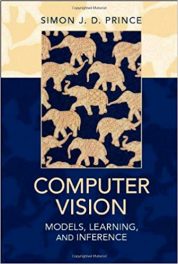Editors: Michael Brawn, Brad Edwards, Janet A. Harkness, Timothy P. Johnson,
Lars Lyberg, Peter Ph. Mohler, Beth-Ellen Pennell and Tom W. Smith
Publisher: Wiley – 599 pages
Book Review by: Paiso Jamakar
With eight editors and 98 contributors to this work, this book of almost 600 pages provides extensive, pioneering and highly useful information on the problems and opportunities in the growing area of comparative surveys done in different countries. Today, researchers’ common mission is to yield reliable data using the same survey methods.
The editors point out that between June 25 and 28 in 2008, a first-of-its kind conference on multinational, multiregional and multicultural surveys was held at the Brandenburg Academy of Sciences and Humanities in Berlin. The focus of that event was on survey methodology for comparative research. Known in short as the 3MC conference, click on this link for more information on it: www.3mc2008.de/
We must remark that finally, the world is getting smaller in the academic arena, wherein people who experience the same problems in different nations come together to discuss them and find solutions.
Among the purposes of this book according to its editors outlined in the Preface are: “to draw attention to recent important changes in the comparative methodology landscape, to identify new methodological research and to help point out the way forward in areas where research needs identified in earlier literature have still not been adequately addressed.”
This book is a monograph – a kind of an end product of that conference. Planning for this book and that conference began in 2006. Potential contributors of material were contacted in early 2007 and some 60 percent of the contents of this book came from them.
There are 31 chapters in this book with the material organized around eight parts, which are: Setting the Stage; Questionnaire Development; Translation, Adaptation and Assessment; Culture, Cognition, and response; Key Process Components and Quality; Nonresponse; Analyzing Data, and Global Survey Programs.
At the outset of this book, the editors point out that multinational surveys and research projects are usually (but not all the time) more complicated and difficult to carry out and receive reliable outcomes than surveys involving different cultural or ethnic populations with a single country.
Some of the difficulties involve issues concerning design, pretesting, translation, adaptation, data collection, documentation, harmonization, quality frameworks, and analysis. All these issues are covered in different chapters of this book.
The editors point out that the number of multi-population surveys has grown rapidly in the last 50 years. Among the organizations that commonly do such research are United Nations agencies such as the United Nations Educational, Scientific and Cultural Organization and the World Health Organization; and other international entities such as the International Monetary Fund and the Organization for Economic Cooperation and Development.
The studies conducted among nations can be based on different factors such as culture, geographical region, language or some other commonality. For example surveys can be conducted in countries that have a similar culture but different languages, such as Burmese, Pakistanis and Sri Lankans; a common language but with cultural differences such as the Irish, Scots and Welsh people; within a region such as South America but belonging to different countries.
A new era of standardization in survey methodology has emerged in recent decades, the editors inform us. Benchmarks of good and best practices have developed. Techniques and strategies evolving in the field have changed the way survey research is undertaken and these are being taught at the Masters and PhD levels in colleges.
They point out that increased attention is being paid to quality in official statistics comprising dimensions such as accuracy, coherence, comparability, relevance, timeliness, and ‘total survey error.’ They add that in recent years, more effort is being directed to compiling guidelines and evidence-based benchmarks; developing standardization methods; and establishing specifications and tools for quality assurance and quality control in comparative survey research.
Despite these positive developments towards developing standards to ensure data reliability, challenges in multinational, multiregional and multicultural survey research continue to exist, and these must be addressed, the editors of this work point out. Among these challenges are in the areas of funding, organizing and monitoring. Also, unlike within-country surveys, cross-national research remains difficult to design, conduct and analyze.
Hopefully with further creative thinking and collaboration, solutions to these problems and limitations will soon be found. For now, we commend all the editors of this book for having compiled the tremendous amount of material received, edited and organized it in such a way that enables this unique and pioneering book advance the field of 3M survey research.






